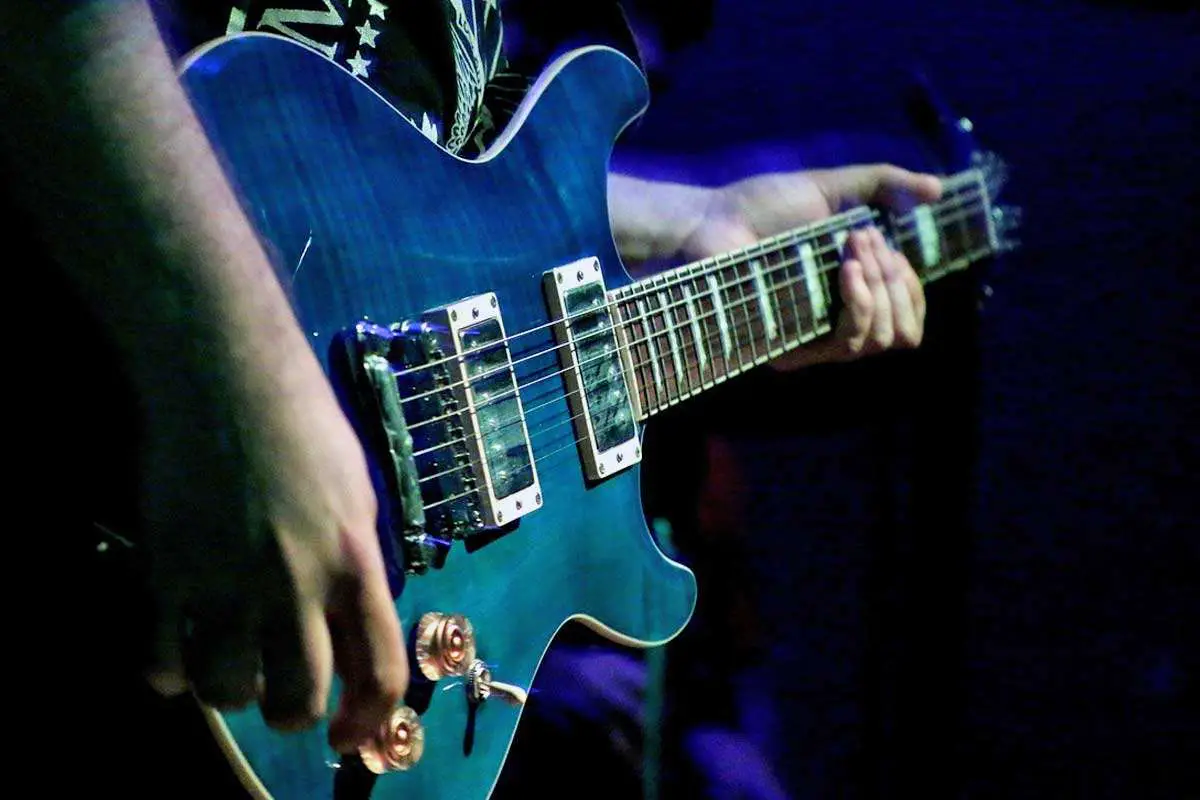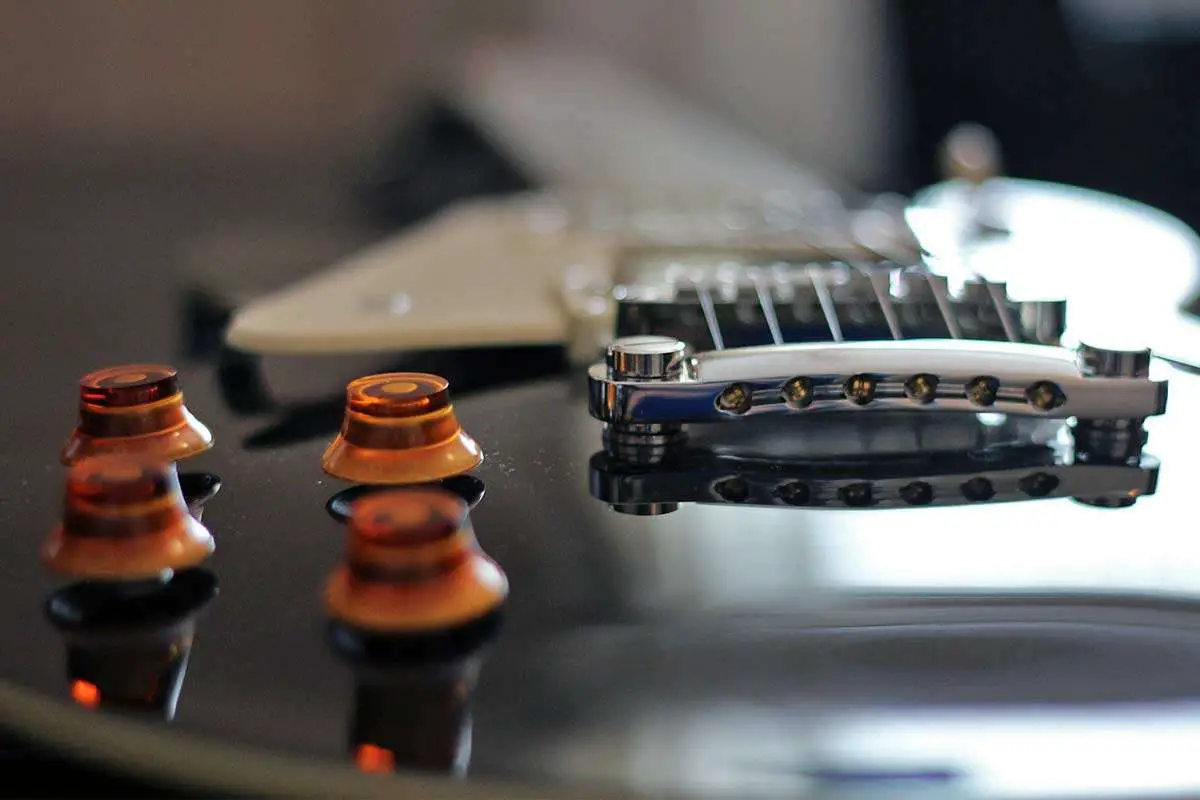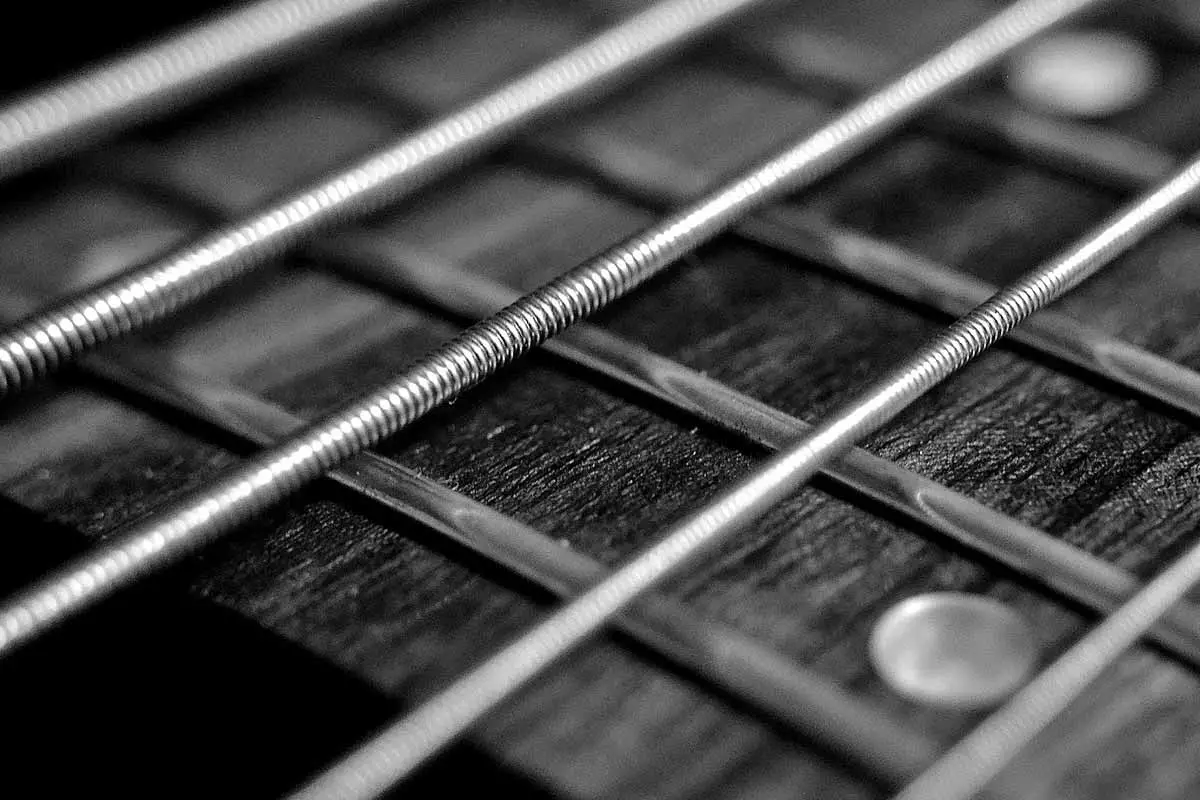Plunging into the profound depths of music, one often stumbles upon a unique tuning style that opens up an entirely new universe of sound – the C Sharp or C# Standard Tuning. This remarkable method of guitar tuning, characterized by its heavier sound and crushing tone that’s favored in downtuned music genres such as Alternative, Djent, & various styles of Metal.
The process involves tweaking all the strings of your guitar down one and a half steps until they reach C#, F#, B, E, G#, and finally C#.
C# tuning enhances the tone of heavier string gauge sets on electric guitars, providing thicker notes & a higher sense of gravity. With the right set of strings, it holds low tunings well without sacrificing playability, making it an excellent choice for exploring alternative tunings while maintaining familiar chord patterns.

Theory Behind C# Tuning (C# F# B E G# C#)
Delving into the theory behind C sharp Tuning, also known as Db Tuning, it’s crucial to understand that this alternative tuning is a transposition of standard tuning ( E A D G B E) down one and a half steps.
C sharp standard tuning lends itself exceptionally well to heavy riffs and power chords, making it an immensely popular choice among rock and metal musicians.
Furthermore, it’s easy to pick up from Standard E tuning as you retain the same chord shapes & string note intervals.
In E Standard Tuning, the open strings are tuned to the following pitches and intervals:
E (E2) – Open
A (A2) – 5 semitones above E
D (D3) – 5 semitones above A
G (G3) – 5 semitones above D
B (B3) – 4 semitones above G
E (E4) – 5 semitones above B
In C Sharp Tuning, the open strings are tuned lower but in the same manner, retain the intervals:
C# (C#2) – Open
F# (F#2) – 5 semitones above C#
B (B2) – 5 semitones above F#
E (E2) – 5 semitones above B
G# (G#2) – 4 semitones above E
C# (C#3) – 5 semitones above G#

How To Implement C Sharp Standard Tuning
To begin, loosen the strings on your instrument, which are usually set to standard E tuning.
Begin with the highest or thinnest string, which is usually an E on most guitars.
Each string will be tuned one and a half steps lower in this alternate tuning scheme, which may appear simple but requires careful handling to avoid string breakage.
Remember that incorrect tuning can cause strained guitar parts due to uneven tension distribution across the strings.
Starting to detune with the lower strings, for example, can cause excessive tension on the thinner strings, causing them to snap!
Then, simply lower the tension of each string until you have the same pitch as the ones in the video below.
Heavier Gauge Strings For Low Tunings
Delving into the realm of heavier gauge strings for lower tuning, it’s important to consider the string tension and how it corresponds to playability and tone.
Opting for heavier gauge strings can significantly enhance your performance, especially when employing an alternate tuning like C sharp.
With standard guitar tuning, lighter gauge strings will suffice, however in this case, you might notice that the strings become very loose. This can cause string rattles or string buzzing, as well as reduce your overall tone & sustain.
So if you want to achieve a more robust tone for heavy riffs & plenty of sustain for your solos, the key is choosing a string gauge of about 11-54 or 12-56.
One thing to note is that the thicker the string, the more tension it will have so there is some room for preference. If you’re mainly looking to play guitar chords, a beefier gauge will suit you well although it will require more finger strength. For a lighter touch & easier bends, try something like a bit lighter like the 11s.
Other things to consider besides choosing to use thicker guitar strings include:
Checking the guitar neck relief, widening the nut & bridge slots, intonation, and bridge adjustment.

What’s An Alternate Guitar Tuning & Others To Try
An alternate tuning is a string arrangement that differs from standard tuning (E A D G B E) to create unique and distinct musical possibilities.
Different alternate tunings can emphasize specific chord voicings, facilitate specific fingerings, or achieve unusual tonal characteristics, allowing guitarists to experiment with new sounds, textures, and playing techniques that are not possible in standard tuning.
Here are a couple more that are popular among metal players or those looking to tune low:
Drop D Tuning
Drop D tuning is where the lowest string is tuned down a whole step to D, creating the tuning D A D G B E.
It’s super simple to implement & allows you to play power chords with ease with only one finger across three strings.
Finally, you can more easily revert back to standard tuning if needed and all of this makes it the most popular down tuning for guitar.
Drop C Tuning
Drop C tuning results in the string notes C G C F A D. This alteration also provides a lower and heavier tone suitable for genres like metal and hard rock, offering extended range and power-chord possibilities.
The lower pitch enhances chugging riffs and creates a more aggressive sound.
Drop C shares similarities with Drop D in terms of chord shapes and ease of power chords but brings an even deeper and more brutal sonic quality due to the further down-tuning, making it a favored choice for extreme metal genres.
Open D Tuning
Open D tuning is achieved by tuning the open strings to D A D F# A D. This setup allows strumming the open strings to produce a D major chord, facilitating slide guitar techniques, folk, and blues music – great for both electric & acoustic guitar.
Its unique characteristics lie in the resonant, open sound and easy chord formations, especially major chords.
Open D differs from Drop D tuning in that all strings are detuned to create a complete chord, enabling rich, open voicings without requiring finger pressure on the fretboard.
While Drop D offers ease of power chords and is common in rock and metal, Open D is more aligned with acoustic guitar fingerstyle & slide techniques on the electric, making it a preferred choice for a different range of musical genres.
C Standard Tuning
C standard tuning is done by tuning all strings down two whole steps, resulting in the tuning C F Bb Eb G C.
This is a great tuning for delivering a heavy tone or deeper sound, lending itself well to genres such as doom metal, sludge, and other heavy subgenres. The lower pitch enhances the weight and power of riffs, while the open chord voicings offer a unique tonal palette.
C standard tuning shares similarities with other dropped tunings like C sharp tuning, with C sharp tuning (C# F# B E G# C#) offering a slightly higher pitch than C standard.
Both are commonly used in genres like djent, metalcore, and death metal, where the tightness of the strings at this tuning contributes to the characteristic “chuggy” and percussive sound.
Related:
How To Tune an 8 string guitar
Frequently Asked Questions
Who uses C# tuning?
A few bands who have been known to use C Sharp Tuning include: Meshuggah, Slipknot, Limp Bizkit, Korn, Black Sabbath, Lamb of God, Gojira, Periphery, Whitechapel, Black Label Society, and a perfect circle among many others.
Why do people prefer C#?
Many bands like to use it because of its aggressive & percussive sounding tone. It’s also great for heavy chugs and the chord shapes across the fretboard remain the same as standard guitar tuning.
Is there a difference between C and C# tuning?
Yes, there is a notable difference between C standard and C# standard guitar tuning.
C standard tuning involves tuning all the strings of a guitar down two whole steps from the standard tuning (E A D G B E), resulting in the tuning C G C F A D.
On the other hand, C# standard guitar tuning refers to tuning the strings down one and a half steps, resulting in the tuning C# F# B E G# C#.
Conclusion
Overall, C Sharp Tuning can open up new avenues of creativity and expression for guitarists of all levels. While it might seem intimidating at first, the rewards are well worth the effort.
One thing to keep in mind is that C sharp tuning requires thicker strings to maintain tension at the lower pitch, ensuring stability and optimal sound quality.
Thicker strings can also contribute to a fuller tone, enhancing the power and richness of your playing. So, don’t hesitate to take the plunge and experiment with this tuning – it’s an exciting opportunity to infuse your music with a heavy tone that exudes gravitas.
As you work with this tuning, you’ll find that it lends itself well to exploring new techniques, pushing your playing to new heights, and discovering new musical horizons with alternate guitar tunings!
